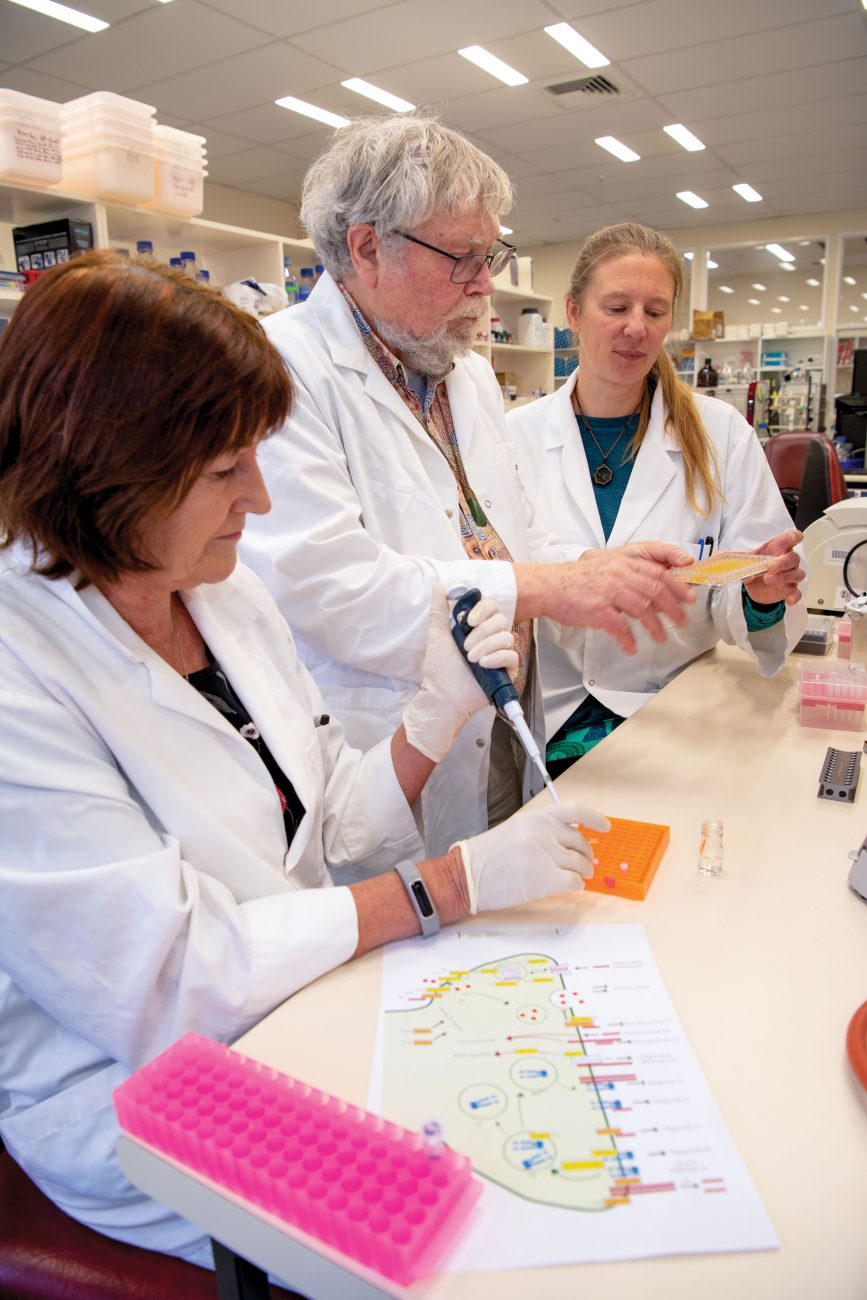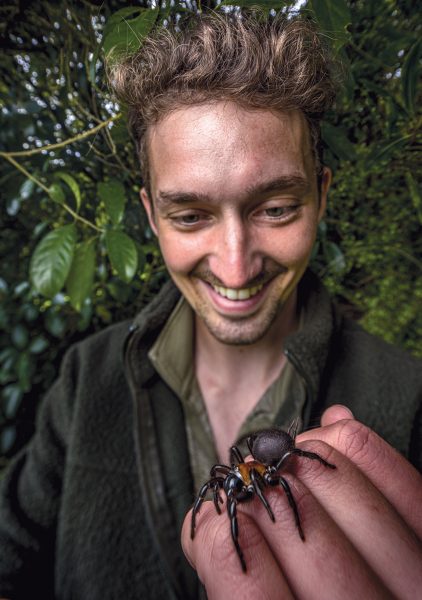Warren Tate investigates unexplained illnesses.
He could have retired years ago, but there’s still so much to do.

A cold and tired student changed the course of Warren Tate’s life. He was deciding what to study at university, and had been considering going into medicine at Dunedin. A medical student told him that the town was permanently shrouded in mist and that he’d have to study all night long. No thanks, thought Tate, and signed up for a science degree in Wellington instead. There, he got into molecular biology. Wanting to obtain a PhD under New Zealand’s leading DNA researcher, he ended up in Dunedin anyway. It’s not so bad, he thought. He’s been there ever since.
Back then, in the 1970s, the mechanism of protein synthesis was an exciting new field of research—figuring out how proteins are manufactured inside cells. Tate decided to look into the ribosome, the part of the cell which turns gene sequence into proteins.
Tate discovered that the ribosome can change the way it reads code. Imagine if the spaces between the words on this page suddenly shifted one letter to the left. It would become gobbledegook to you, but when this takes place in genetic code, it makes perfect sense to the ribosome, which starts manufacturing a totally different protein from the same material. Viruses use this mechanism—HIV employs it, as does SARS. “I got into HIV biology, even to the point of developing lead compounds for a new drug,” says Tate. “And that got me into unexplained human conditions.”
Then, in the 1980s, Tate attended a lecture by Otago psychology professor Graham Goddard, who was studying mammalian memory. “I didn’t understand any of his figures and things, but I thought, well, there’s molecular biology behind all of this.”
Tate’s collaboration with Goddard developed into a project looking at Alzheimer’s disease with another Otago University professor, neuroscientist Cliff Abraham. Alzheimer’s occurs when too much of a certain peptide is produced by the brain; Tate and Abraham found a protein which seemed to be protective against the peptide’s effects. When the protein was given to rats with memory problems, the rats redeveloped the ability to learn.
Could the protein be developed and delivered to the brain as an Alzheimer’s therapy? Abraham and Tate figured out how to make the protein in the lab so that they could send it out to other scientists to study. “This protein became in demand nationally, and then internationally, and so we’ve established, if you like, a human brain protein bank,” says Tate. “That was quite a fulfilling part of my career.” He laughs. “I never plan these things, they just kind of evolve.”
While this was taking place, another unexplained human condition had struck home. In 1990, Tate’s 14-year-old daughter, Katherine, caught glandular fever. The symptoms of the virus abated, but she didn’t recover. At her insistence, Tate took her to school every morning, but she was so tired that one of her teachers would drop her home again by 10am. Finally, Tate convinced Katherine she was too ill to attend classes. When he sought help for her, one specialist said Katherine was just trying to skip school.
It was Tate’s first experience of myalgic encephalomyelitis (ME), and of medical professionals’ reactions to it. “So I tried to get started on research,” he says. “I put in a grant to the Health Research Council and it basically got laughed out. The referee said, ‘This is not a real disease’.”
In 2010, Tate won New Zealand’s highest honour in science, the Rutherford Medal, for his work on protein synthesis and Alzheimer’s. It didn’t make it any easier to fund his work on ME. “People have said, ‘Why, after winning the Rutherford Medal, why would you want to fritter away the rest of your research time working on this?’”
In 2020, Tate published two papers, one with Otago associate professor Aniruddha Chatterjee, describing the physical processes underpinning ME—showing that it wasn’t taking place in people’s minds, but in their bodies. As Tate had suspected, something odd was happening in the mitochondria, the factory that produces energy within cells. In ME patients, less energy was being made, and, as if to compensate, the mitochondria were overproducing other proteins instead. The factory, instead of generating its product, was busy making more machinery.
One of the reasons ME has struggled for recognition, says Tate, is its comparative rarity. That changed when the pandemic struck and many people began reporting ME-like symptoms. Now, Tate has become a de facto counsellor for people experiencing long COVID. Often, he’s the first person to affirm that what they’re experiencing is happening in their body, not in their mind.
These post-viral conditions are connected, he says. “It’s the individual response to a major viral stress, whether it be COVID, or something else, which is causing the body’s physiology to change. And that’s where our focus needs to be.” He laughs. “My career has really taken off again.”
Tate thought he would have retired by now to work on his garden. He’s pushing 76. “I thought I’d just be among plants and birds and whatever,” he says. Instead, he gets up in the morning, puts on a jaunty shirt, and heads to the lab. “I mean, there are too many things that need to be done for me to give up.”

















